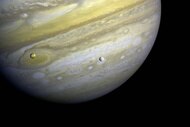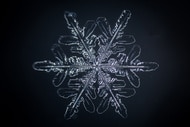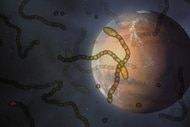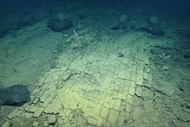Create a free profile to get unlimited access to exclusive videos, sweepstakes, and more!
WISE finds coolest brown dwarfs ever seen!
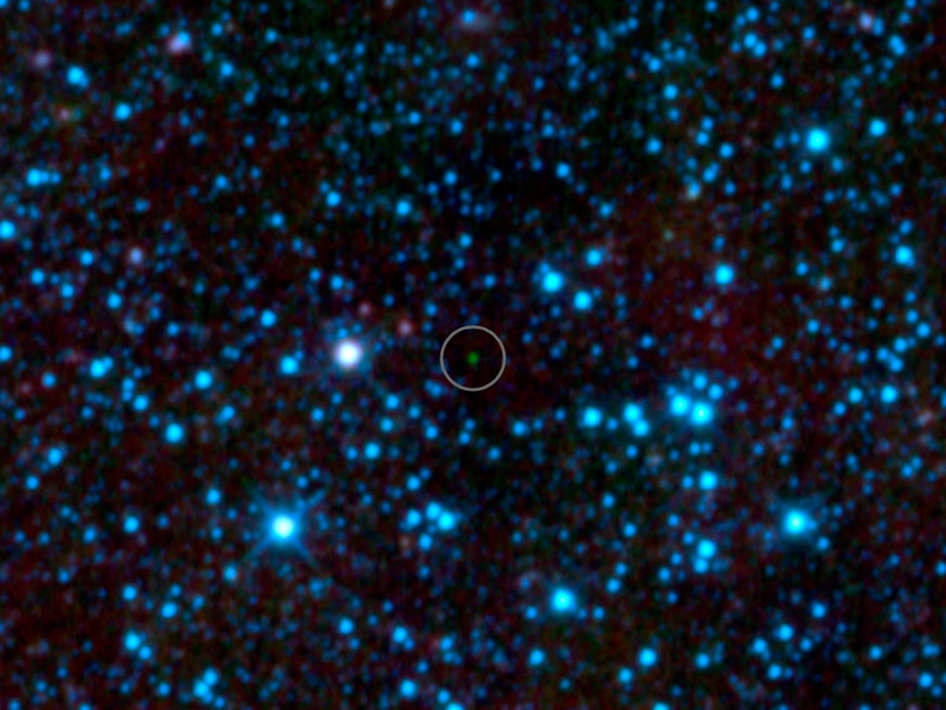
How cool is this? Literally, the coolest: NASA's Wide-field Infrared Survey Explorer has found the lowest-temperature brown dwarfs ever seen, the tail end of the stellar class of brown dwarfs called Y dwarfs. How not hot are they? This one (called WISE 1828+2650 if you're playing brown dwarf bingo), spotted by WISE, has a surface temperature of 25° Celsius -- that's 80° Fahrenheit!
As I sit here and write this, it's warmer outside my window than it is on the surface of that object!
Not only that, another Y dwarf they found, called WISE 1541-2250, may be the seventh-closest object in the sky outside our solar system.
The distance found is not directly measured; it was calculated using the brightness of the brown dwarf. The distance was found using parallax. Even though it's only about nine light years away, it's incredibly faint. The only reason it was seen at all is that WISE is tuned to see in the far-infrared, where these things are far brighter than in visible light.
The most exciting part about this is it supports an idea I've had (and lots of others have had too) for a long time: Proxima Centauri may not be the closest object to the Sun. A Y-class brown dwarf could be even closer and still have evaded our detection. Even at four light years away -- roughly how far Proxima Cen is -- a Y star would be pretty hard to see. We may not know for a while yet, but it's possible.
So what's the deal with brown dwarfs? These are objects more massive than planets, but not massive enough to be true stars. Some astronomers classify stars as objects that can sustain nuclear fusion in their cores. In a star like the Sun, that's due to its mass; there is enough crushing pressure in the core to fuse hydrogen into helium. A lower mass object, like a planet, can't do that. It lacks the oopmh to squeeze atoms together tightly enough. The lower limit for this mass is about 75 times that of Jupiter, equivalent to about 7% of the mass of the Sun.
Somewhere between that mass and that of a planet is a brown dwarf. Definitions vary -- I've seen some fun and lively arguments about it! -- but most astronomers don't consider brown dwarfs to be true stars. A BD might once have been able to fuse deuterium (an isotope of hydrogen) or lithium in its core, but that shuts off pretty quickly as the BD ages. By the time they're a billion years old or so, they don't generate their own energy, and just sit there cooling off. The lower mass they are, the more quickly they cool, and Y dwarfs are the coolest of them all. If you want to call them stars -- and that's fine with me -- then this means these objects found by WISE are also most likely the lowest mass stars ever seen.
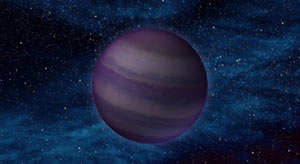 During the time it spent surveying the sky, WISE found at least six of these ultra-cool objects, ranging from 9 to 40 light years away. Due to the combination of the light they emit and the filters used by WISE, they appear green in WISE images... which brings up an interesting question: what color would these things appear if you were near one?
During the time it spent surveying the sky, WISE found at least six of these ultra-cool objects, ranging from 9 to 40 light years away. Due to the combination of the light they emit and the filters used by WISE, they appear green in WISE images... which brings up an interesting question: what color would these things appear if you were near one?
That's hard to say. Low-mass stars, say down to about a tenth the Sun's mass, look red. But as you look at cooler objects like brown dwarfs, things get complicated. For example, once the temperature is low enough, molecules like water and even methane can exist in the object's atmosphere. These absorb certain colors of light, changing the color of the BD itself. There's some thinking that very cool stars, like Y dwarfs, might be magenta in color! I'd love to see that. But that's why the artist's representation of a Y dwarf, shown here, is colored purple. No one's really sure, though.
I find these objects pretty interesting for many reasons -- I studied them briefly when I worked on Hubble, and we got a visible-light spectrum of the first brown dwarf ever discovered, called Gliese 229b. But more than that, I like things that push limits. What's the difference between a brown dwarf, a star, and a planet? Making definitions is a dangerous game; even something as simple as "planet" can cause pretty good arguments. In this case, the definition of "star" gets fuzzy on the low end. What if an object fused deuterium, but only for ten minutes? What if it has enough mass to fuse deuterium but never could because its core never contained deuterium?
What nature is telling us, I think, is that definitions only serve to limit our imagination. Nature doesn't work in definitions; only humans do that. Don't worry about what to call something so much as worry about what it is.
Image credit: NASA/JPL-Caltech/UCLA.
Related posts:
- Two new nearby brown dwarfs found
- WISE finds the coolest star. Literally.
- The case of the brown dwarf that's really red or possibly blue
- Dim, faint, and small is no way to go through life, son





